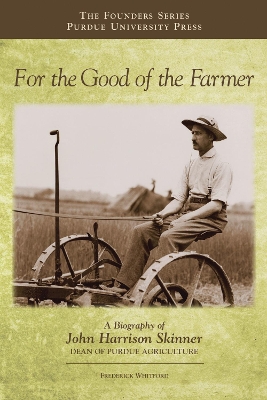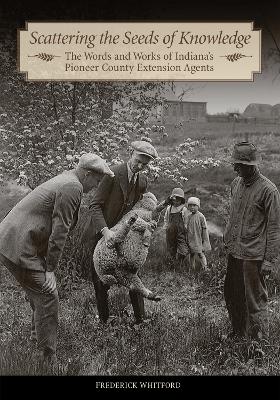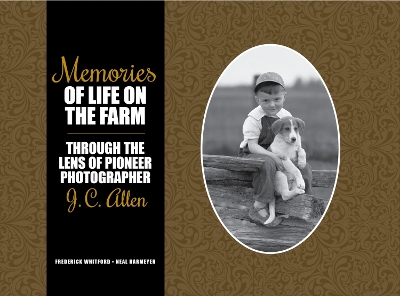Founders
3 total works
The key role that farming plays in the economy of Indiana today owes much to the work of John Harrison Skinner (1874-1942). Skinner was a pioneering educator and administrator who transformed the study of agriculture at Purdue University during the first decades of the twentieth century. From humble origins, occupying one building and 150 acres at the start of his career, the agriculture program grew to spread over ten buildings and 1,000 acres by the end of his tenure as its first dean. A focused, single-minded man, Skinner understood from his own background as a grain and stock farmer that growers could no longer rely on traditional methods in adapting to a rapidly changing technological and economic environment, in which tractors were replacing horses and new crops such as alfalfa and soy were transforming the arable landscape. Farmers needed education, and only by hiring the best and brightest faculty could Purdue give them the competitive edge that they needed. While he excelled as a manager and advocate for Indiana agriculture, Skinner never lost touch with his own farming roots, taking especial interest in animal husbandry. During the course of his career as dean (1907-1939), the number of livestock on Purdue farms increased fourfold, and Skinner showed his knowledge of breeding by winning many times at the International Livestock Exposition. Today, the scale of Purdue's College of Agriculture has increased to offer almost fifty programs to hundreds of students from all over the globe. However, at its base, the agricultural program in place today remains largely as John Harrison Skinner built it, responsive to Indiana but with its focus always on scientific innovation in the larger world.
Today, Purdue Extension delivers practical, research-based information that transforms lives and livelihoods. Tailored to the needs of Indiana, its current programs include Agriculture and Natural Resources, Health and Human Sciences, Economic and Community Development, and 4-H Youth Development. However, today's success is built on over a century of visionary hard work and outreach.
Scattering the Seeds of Knowledge: The Words and Works of Indiana's Pioneer County Extension Agents chronicles the tales of the first county Extension agents, from 1912 to 1939. Their story brings readers back to a day when Extension was little more than words on paper, when county agents traveled the muddy back roads, stopping at each farm, introducing themselves to the farmer and his family.
These Extension women and men had great confidence in the research and the best practices they represented, and a commanding knowledge of the inner workings of farms and rural residents. Most importantly, however, they had a knack with people. In many cases they were given the cold shoulder at first by the farmers they were sent to help. However, through old-fashioned, can-do perseverance and a dogged determination to make a difference in the lives of people, these county Extension agents slowly inched the state forward one farmer at a time. Their story is a history lesson on what agriculture was like at the turn of the twentieth century, and a lesson to us all about how patient outreach and dedicated engagement-backed by proven science from university research-reshaped and modernized Indiana agriculture.
Scattering the Seeds of Knowledge: The Words and Works of Indiana's Pioneer County Extension Agents chronicles the tales of the first county Extension agents, from 1912 to 1939. Their story brings readers back to a day when Extension was little more than words on paper, when county agents traveled the muddy back roads, stopping at each farm, introducing themselves to the farmer and his family.
These Extension women and men had great confidence in the research and the best practices they represented, and a commanding knowledge of the inner workings of farms and rural residents. Most importantly, however, they had a knack with people. In many cases they were given the cold shoulder at first by the farmers they were sent to help. However, through old-fashioned, can-do perseverance and a dogged determination to make a difference in the lives of people, these county Extension agents slowly inched the state forward one farmer at a time. Their story is a history lesson on what agriculture was like at the turn of the twentieth century, and a lesson to us all about how patient outreach and dedicated engagement-backed by proven science from university research-reshaped and modernized Indiana agriculture.
John Calvin Allen, professionally known as J. C., worked as aphotographer for Purdue University from 1909-1952, and operated his own photography business until his death in 1996. The J. C. Allen photographs represent a historical account of the transition from pioneer practices to scientific methodologies in agriculture and rural communities. During this major transitional period for agriculture, tractors replaced horses, hybrid corn supplanted open-pollinated corn, and soybeans changed from a novelty crop to regular rotation on most farms. During this time, pure bred animals with better genetic pedigrees replaced run-of-the-mill livestock, and systematic disease prevention in cattle, swine, and poultry took place.
Allen'sphotographs also document clothing styles, home furnishings, and the items people thought important as they went about their daily lives. Looking closely at tractors, livestock, wagons, planters, sprayers, harvesting equipment, and crops gives one a sense of the changing and fast-paced world of agriculture at that time.
This volume contains over 900 picturesque images, most never-before-seen, of men, women, and children working on the farm, which remain powerful reminders of life in rural America at theturn of the twentieth century. As old farmhouses and barns fall victim to age, Allen photographs are all that remain. While those people and times no longer exist today, they do remain ""alive"" because of the preservation of that history on film. A camera in his hands and an eye for photography allowed Allen to create indelible visual histories that continue to tell the story of agriculture and rural life from long ago.
Allen'sphotographs also document clothing styles, home furnishings, and the items people thought important as they went about their daily lives. Looking closely at tractors, livestock, wagons, planters, sprayers, harvesting equipment, and crops gives one a sense of the changing and fast-paced world of agriculture at that time.
This volume contains over 900 picturesque images, most never-before-seen, of men, women, and children working on the farm, which remain powerful reminders of life in rural America at theturn of the twentieth century. As old farmhouses and barns fall victim to age, Allen photographs are all that remain. While those people and times no longer exist today, they do remain ""alive"" because of the preservation of that history on film. A camera in his hands and an eye for photography allowed Allen to create indelible visual histories that continue to tell the story of agriculture and rural life from long ago.


